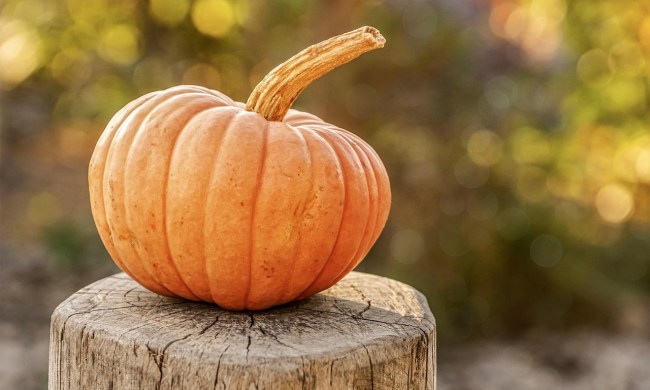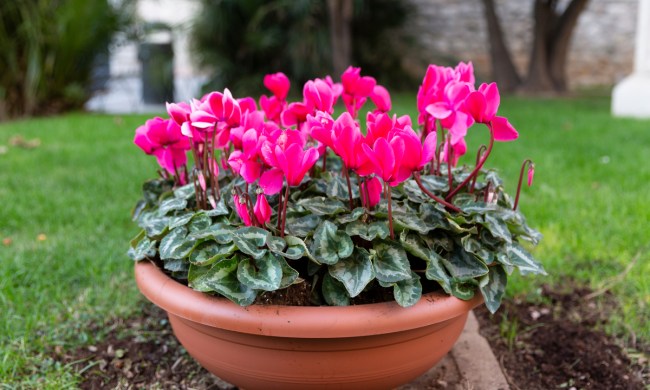
Sometimes, the most striking plants are the ones that you can readily find at a nursery or in a commercial landscape. A common fixture in warm-weather landscapes and gardens, the succulent century plant is as beautiful as it is intimidating with its octopus-like form lined with sharp edges and spikes. If you've ever wondered about its origins and how to give it the best care possible in your garden, here's what you need to know.
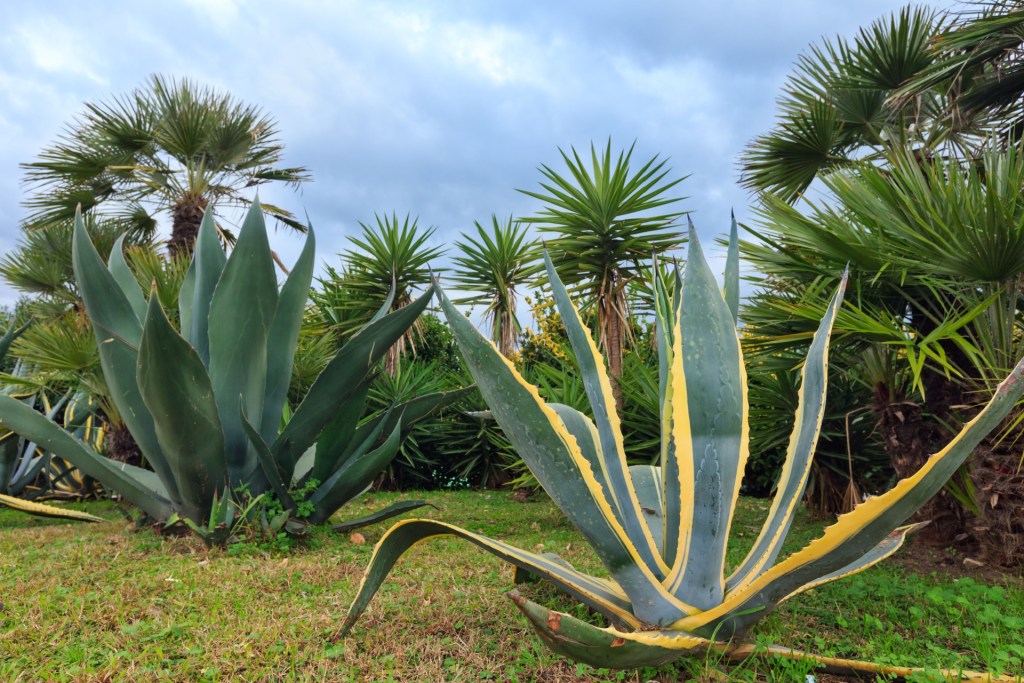
What makes the century plant so special?
Formidable in stature, the century plant, or Agave americana is native to Mexico and the southwestern region of the U.S. What's most remarkable about these plants is that they can grow up to 10 feet across and develop leaves that stretch 6 feet long. In addition to their gargantuan size, they grow in a rosette form, featuring saw-edged foliage with dagger points on the ends.
Often, century plants come in a uniform blue-gray color. However, you may find the marginata variety with yellow edges, or the medopicta cultivar with a cream body and green edges. When handling this plant, note that the sap is mildly toxic — but really, it's the spines that you should watch out for.
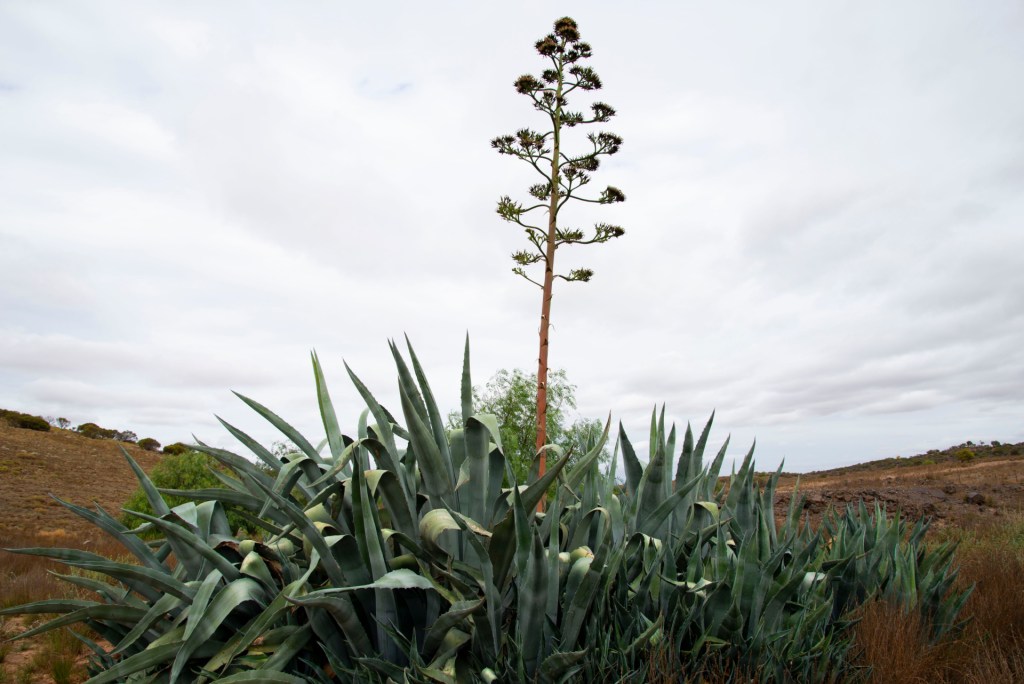
How often does the century plant bloom?
There's a prevalent belief that century plants only bloom once in a century, hence their namesake. It's true to that century plants only bloom once in their lifetime, but they usually bloom when they are 10 to 30 years old, not once every 100 years. During the blooming period, a tall flowering stalk emerges from the center of the agave's rosette, featuring 3- to 4-inch blooms that are yellow-green in color.
Century plants typically die after blooming. However, the good news is that they put out a lot of pups, which makes them easy to propagate and share.
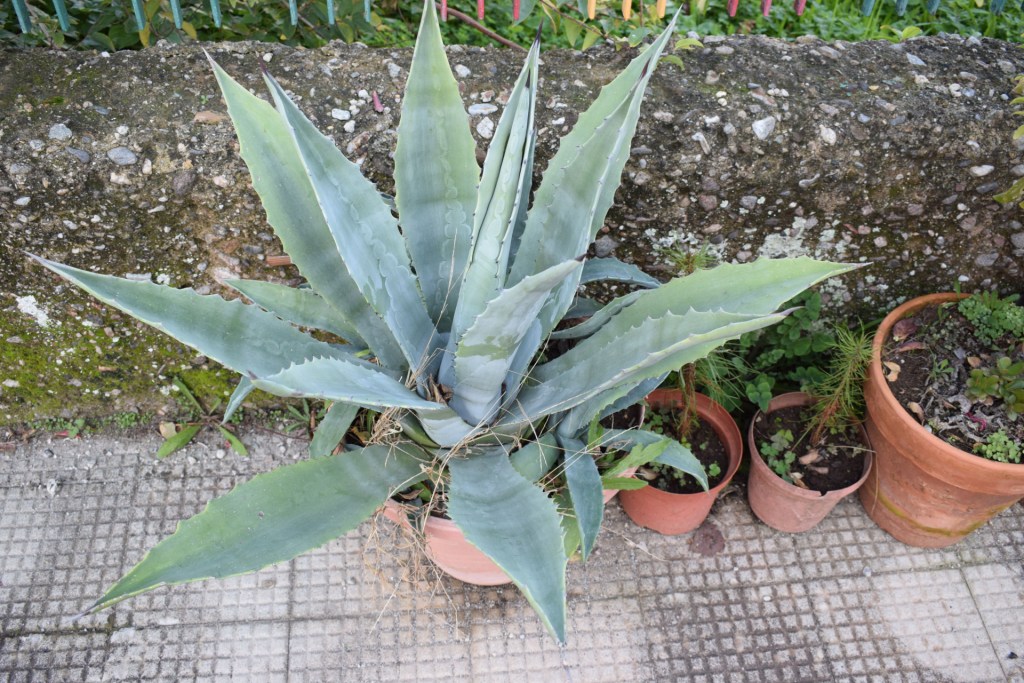
How do you care for a century plant?
Hardy in climate zones 8 to 10, century plants can only be kept indoors when they are very young. Because of their size and naturally sharp leaves, these agave plants don't do well in small homes where human inhabitants might inadvertently bump into them. They're also succulent plants, which means they flourish outside in the sun. In order to keep your century plant thriving, here's what you need to know about maintaining it.
Step 1: Repotting
Keep your century plant in a gritty, well-draining cactus soil. While it will tolerate drought, it will experience root rot if you're heavy-handed with watering. You can keep it in a container during its early years of life, but bear in mind that it will be more convenient down the line to find a spot for it in the ground.
Step 2: Lighting
Place your century plant in an area that receives full sun for at least 6 to 8 hours a day.
Step 3: Temperature
Keep your century plant in an area where it gets no colder than 20 degrees Fahrenheit — century plants are not frost hardy, so you should plan to overwinter small plants, if possible, when the temperature crosses under that threshold.
Step 4: Watering
Water your plant when at least 1 inch of soil feels dry to the touch — you can even let the soil dry out completely. While century plants appreciate a drink during the hottest days of summer, you definitely don't want to make them susceptible to root rot.
Step 5: Fertilizing
There is actually no need to feed your century plant as long as you're mindful of its watering and lighting needs. In fact, overfertilizing may encourage blooms, which will speed up the plant's life cycle and lead to its untimely death.
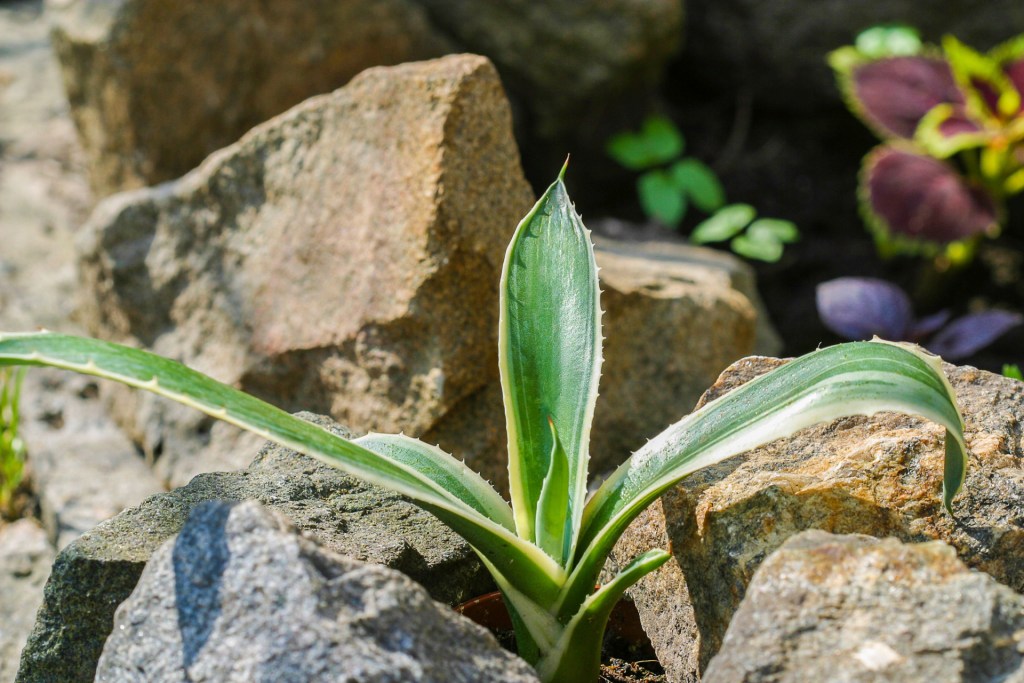
How do you propagate a century plant?
After some time, century plants develop pups at the base of the mother plant. Getting cuttings is very simple, but you'll definitely want to be careful not to stab yourself with the sharp points.
Step 1: With gardening gloves on, get as close to the base of your mother plant as possible.
Step 2: Carefully pull up the pup, tugging the plant gently.
You may need to go in with a trowel to sever the pup at the root area where it connects to the mother plant. Make sure to get as much root as possible.
Step 3: Allow the pup to form a callus for about a day or two.
Step 4: Fill a container with cactus soil or a well-draining potting mix and then place the pup in there.
You can use a plastic or a clay pot — the latter may be better if you tend to overwater.
Step 5: Water your plant whenever the top inch of soil dries out. Now you have a new plant — and there's no need to repot it until the following year.
As unnerving as it may look, the century plant is actually quite easy to care for and even easier to propagate. With plenty of sunshine and well-draining soil, you're pretty much set. Just keep an eye out for the sharp edges and points when caring for it and you'll be able to appreciate its beauty without facing the consequences of those unwanted pokes!


